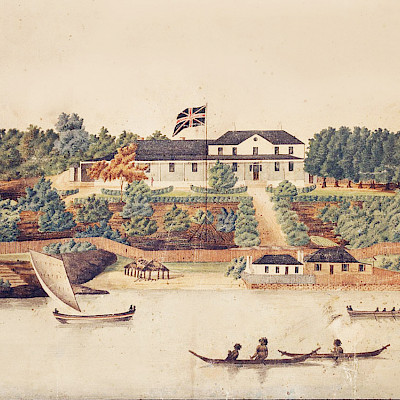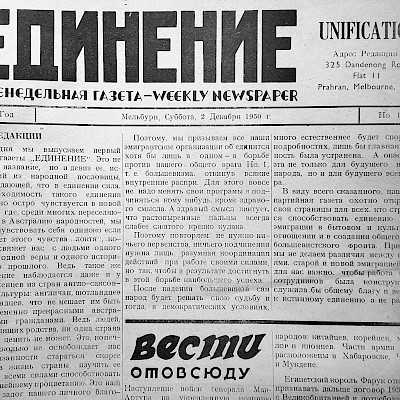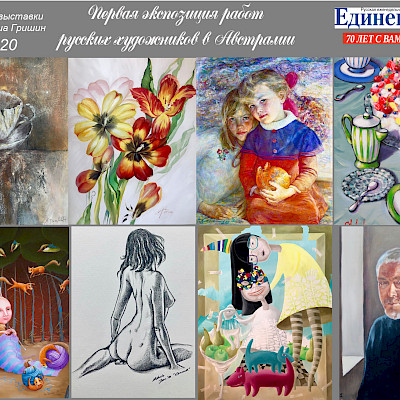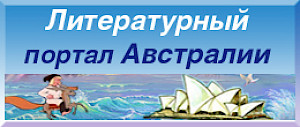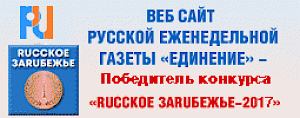This book, "White Russians, Red Peril", is another significant research work by the renowned Australian historian, Sovietologist, Sheila Fitzpatrick, honorary professor of the Department of History at the University of Sydney.
It is dedicated to the memory of her late brother, and written for those who seriously study and are interested in the history of Russians in Australia. For us, Russian immigrants in this country, it should be of particular interest, since it concerns us in general. It will, of course, be of interest to those of our compatriots, whose names, or the names of their acquaintances, are mentioned by the author, referring to them as sources, or mentioning them in the context of the events about which she writes. There are many of them. The book will undoubtedly also arouse the interest of Russian historians and researchers. The author has worked intensively on this book for the past three years.
My first general impressions and notes
As soon as I found out about the book on the Internet, I was curious due to its intriguing title. Such is the time now. We hear a lot of criticism and unfavorable commentary directed against Russia. Australian television channels broadcast biased programs about Russians and what is happening in Russia, stirring up some kind of animosity.. And then there is this book appearing written by a serious Australian historian about Russians, "whites" and "reds", about some kind of peril. I wanted to read, see what kind of picture she paints about us, whether she draws any parallels with today's political and other realities. I was prepared to get it as soon as it was going to be on April 1st.
Unexpectedly, I receive a phone call from the editor of the Edinenie newspaper, Vladimir Kuzmin, who asks me to look at this book and write a piece about it for the newspaper. It was sent to him by the publisher (La Trobe University in Melbourne, in conjunction with Black Inc). for review And now I have the book in front of me, holding it in my hands, flicking through the pages (there are 368 of them), reading the press release, making my first notes, which I now share with the readers.
Nice cover of contemporary design in three colours. The combination of red and black is particularly striking with red colour being the dominant. There are no illustrations and the book is in English. Possibly in the future it will also be published in Russian in Russia, like some other books by this historian on Soviet and Russian topics.
So, what is this book written about? It is about those ethnic Russians who migrated to Australia after the Second World War, about whom, the author explains, very little is known, and there were more than 20,000 of them. Some arrived via China, others from refugee camps in Europe. Many Russians who arrived from Europe ("DP") preferred to keep a low profile in Australia and some passing as Poles, Western Ukrainians and Yugoslavs. They had good reasons for this: for the Soviet Union, the author explains, the resettlement of Russians to Australia was tantamount to a kind of "theft of its citizens", so secret agents were deployed to persuade them to return to their homeland. Australia at the time treated the newly arrived Russian emigrants with wary suspicion, even as it tried to increase its population by opening doors for immigrants. Their activities were monitored and attempts made to influence them by both Australian and Soviet special services, as well as, to some extent, American and British. This is mainly what the book is about.
I’ll say it frankly: I have not read a book like this one in English about us Russians before. The author wins you over with her neutrality in the way she portrays the issues, and I sensed with a degree of sympathy and understanding of what the Russian refugees of that time, what they had to go through and how they settled in this country. She makes no value judgments, she simply describes events citing the research she conducted with access, to various archives, as well as the collected testimonies, stories and memories of those who have personally seen and experienced those events. The author draws a general picture of that time, perhaps leaving a deeper analysis of events for the future. I think it is important for the people of our community to know that such a book has appeared. For me, she makes an important contribution to the history of Russian migration to Australia. I will follow with particular interest how the book will be received by the reading Australian public, politicians and academics.
The question for the author, where to start her story, did not present any difficulty - the starting point was the forced displacement of people caused by various conflicts. For some of her heroes, she says, the cause was the Bolshevik October Revolution (1917), followed by the Russian Civil War, which ended in the early 1920s. For others, it was World War II (1939-45), and for others still, the coming of the communists to power in China (1949).
The decision where to end the story, was, as she notes, was a more difficult one. Most of the "European Russians" arrived in Australia between 1947 and 1951, earlier than from China, from where Russians arrived in relatively small numbers in the early post-war years, and more massively in the 1950s, with subsequent migration and family reunions before early 1960s. As a guideline, she took the anti-communist sentiments of post-war Russian migrants, as well as the constant intelligence activities that, according to her, were carried out in relation to them by Australian, Soviet and other special services. The culminating event of this activity, she decided to take for her story was the well-known sensational “Petrov Affair" in Australia in 1954. She did not make it her task to research and tell the story of Russian migration to Australia in subsequent years.
The book begins with acknowledgements of organisations and individuals who have assisted her in her work on the book. These are Elena Govor, Mara Moustafine, the late Natalia Baich, Alexander Ilyin, Galina Kuchina, Tatiana Torlina, Nikolai Pitt, Patricia Polyanski, Larry Sitsky, Andrey Jakubowicz, Igor Ivashkoff (Gary Nash) with his wife Marina and others.
The author's main story is divided into three parts and contains nine chapters. Here they are: Part I (Displaced Persons in Europe, pp. 23-72) - 1. Displacement, 2. Australia’s selection procedures. Part II (Russians in China, pp. 73-148) - 3. Manchuria, 4. Shanghai, 5. Departure. Part III (Resettlement to Australia, pp. 149-246) - 6. Arrival, 7. White Russians, 8. Red Russians, 9. ASIO and the Cold War. There are about 220 pages for these three parts. The author's conclusion is set out on pages 247-262.
I was pleased to see in the book, as is the custom for such serious works, a subject and name index, notes, and a bibliography. Almost 100 pages are devoted to them (pp. 274-368). I think many will find there a great number of familiar names - representatives of the clergy, public and political figures, journalists, former military men, authors of memoirs and other works, people of art.
I was somewhat disappointed to spot immediately some few typos or mistakes, for example, the father of Archpriest Mikhail Alekseevich Protopopov was mistakenly named Mikhail, and Larisa Mikhailovna Ramenskaya Ludmila. It was also incorrectly noted that L.D.Jiganov's journal "Pictures of the Past" was published in Melbourne. L. Jiganov published his magazine in Sydney. But then, such small mistakes do occur also from time to time in serious works by others.
The sources used by the author are listed in the Bibliography section (pp. 339-350). These include various archives, databases, interviews with some individuals, unpublished manuscripts, and e-mails. Also: scientific dissertations, magazines and newspapers, official reference books and publications, memoirs, family stories, autobiographical novels, other selected works (books, articles). The list is impressive. All this had to be studied, comprehended and systematized
Among the dissertations, which were also noted by the author as the sources of her work, are the dissertations of Archpriest Mikhail Protopopov, Nikolai Pitt and the late Anatoly Konovets and others.
Among the Russian periodicals: the newspaper "Edinenie", magazines "Avstraliada", the magazine of the Russian Social Club in Sydney "Friendship", "Pictures of the Past", "Russians in Australia", "Russian Atlantida". The list of other printed sources (memoirs, autobiographies and other books and articles) is quite large.
About the author
Sheila Fitzpatrick was born in Melbourne in 1941. There she grew up and graduated from the University of Melbourne with a bachelor's degree in 1961. She continued her study at Oxford University and received her doctorate in 1969. She taught at many universities. She admits that when she began to study the history of Russia, especially the Stalinist period, she thought little about Russian emigrants in Australia. She was interested in those who stayed and lived in the Soviet Union. The only Russian emigrant of that time whom she knew and used to meet was Nina Christesen (Maximova). Her friends in Moscow, from the 1960s to the late 80s, she says, expressed dislike for both the first and second wave of emigrants. She changed her attitude and became interested in the history of Russian emigrants in Australia more than thirty years ago, when she worked in the USA and Great Britain, and after meeting in the late 80s with the former DP from Europe, originally from Riga, Michael (Misha) Danos, her future husband, and especially after her return to Australia in 2012. She has been working on the book energetically and with clear goal in mind for the last three years.
One can meet the author and talk to her at the forthcoming launches of her book. The first one will take place in the coming days in Canberra, on March 28, from 3 pm to 6 pm in a discussion with distinguished academics from the National University. Enquiries and registration on the website:https://www.trybooking.com/events/landing?eid=726450&.
The second presentation will take place in Sydney on April 8 at 6 pm, at the Gleebooks Bookstore (49 Glebe Point Road, Glebe) with University of New South Wales, at a disscussion with another historian Dr. Ruth Balint. Enquiries and registration on the website: https://www.gleebooks.com.au/event/sheila-fitzpatrick-white-russians-red-peril/. And the third online presentation (Zoom) is on Monday, April 19, from 6:30 am to 7:30 pm, with another distinguished historian, Professor Stuart McIntyre of the University of Melbourne. Advanced registration is required, details on the website: https://www.readings.com.au/event/sheila-fitzpatrick-in-conversation.
I will definitely try to attend the Sydney launch on April 8th.
Alexey Ivacheff, Sydney
Other works by Sheila Fitzpatrick
• The Commissariat of Enlightenment: Soviet organization of education and the arts under Lunacharsky, 1917–1921. Cambridge University Press. 1970. Translated into Italian, Spanish.
• Education and Social Mobility in the Soviet Union, 1921–1932. Cambridge University Press, 1979 [paperback 2002].
• The Russian Revolution. Oxford University Press, 1st ed., 1982/3; 2nd revised ed. 1994; 3rd revised ed. 2007. ISBN 978-0-19-923767-8 Translated into Braille, Italian, Spanish, Polish, Portuguese, Russian, Korean, Czech. Russian translation: N. Edelman. - M .: Publishing house of the Gaidar Institute, 2018 .-- 320 p. Online: https://rabkrin.org/fitspatrik-sheyla-russkaya-revolyutsiya-2018-kniga/
• The Cultural Front. Power and Culture in Revolutionary Russia. Cornell University Press, 1992.
• Stalin's Peasants: Resistance and Survival in the Russian Village after Collectivization. Oxford University Press, 1994 [paperback 1996]. Translated into Russian.
• Everyday Stalinism: Ordinary Life in Extraordinary Times: Soviet Russia in the 1930s. Oxford University Press, 1999 [paperback 2000]. ISBN 0-19-505001-0 Translated into Russian, French, Polish, Spanish, Czech, Romanian.
• Tear off the Masks! Identity and Imposture in Twentieth-Century Russia. Princeton University Press, 2005. Translated into Russian & Chinese.
• My Father's Daughter. Melbourne University Publishing. 2010. ISBN 9780522857474 . OCLC 506020660.
• A Spy in the Archives. Melbourne University Press, 2013. Translated into Turkish.
• On Stalin's Team: The Years of Living Dangerously in Soviet Politics. Princeton University Press, 2015 [paperback 2017]. Translated into German, Polish, Greek, French, Czech, Spanish, Russian, Romanian.
• Mischka's War: A European Odyssey of the 1940s. Melbourne University Press & I. B. Tauris, 2017.





